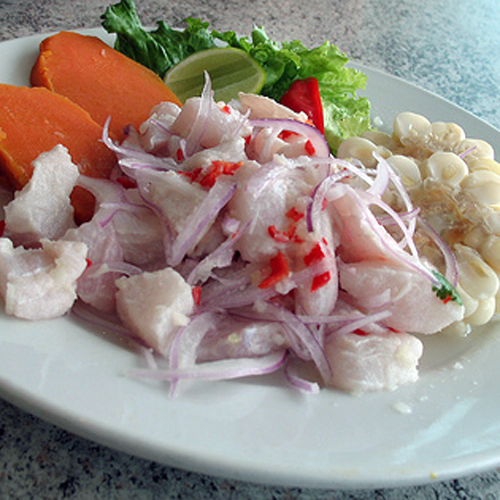Quotes from Planet Taco by Jeffrey M. Pilcher:
“But feeling that I had not truly experienced carne asada, the grilled beef that is the centerpiece of norteño (nothern) cuisine, I recently traveled to Hermosillo 250 miles south of Tucson, Arizona, in the heart of Sonora’s cattle country. Getting there was no easy task, for although it is a state capital, it is poorly served even by Mexican airlines.” (1)
I thought this was a bit odd for a state capital, until I recalled that Frankfort is by no means a major population center, despite being Kentucky’s capital. However, my confusion returned upon reading that the Colegio de Sonora is based in Hermosillo. As Pilcher described his trek around the city, it became clear that this was indeed a commercial center like unto Lexington, if not larger; thus, my confusion over the lack of air traffic remains.
“As connoisseurs of global street cuisine can attest—and as my experiment readily confirmed—fast food in the United States is not particularly fast. Street vendors can prepare elaborate dumplings, noodles, sandwiches, and, of course, tacos as quickly as any chain restaurant can serve a nondescript hamburger, never mind the time spent waiting at the drive-through window.” (4)
I have been both cheated and lied to, and I demand retribution. I will accept said retribution in the form of free food prepared quickly and given to me in forms both hot and delicious. I’m waiting, America.
“Recent biological research indicates that the fantastic myth of the Popul Vuh may well have happened, but in reverse, with humans taking an active role in the creation of maize. While most crops were domesticated through a mundane process of gradual experimentation, often on multiple occasions, the origins of maize were little short of miraculous. Botanists once thought that maize, like its cousin teosinte, was derived from a common ancestral plant, now extinct. However, recent genetic analysis has shown that it was domesticated directly from teosinte through a single, incredibly rare mutation. . . . Crossed back with neighboring strands of teosinte, to propagate the mutation, maize fluorished under human protection, and to this day, it cannot reproduce in the wild.” (25)
This paragraph was a bit of a rollercoaster ride for me. As it began with “. . . the fantastic myth of the Popul Vuh may well have happened . . .” I became ridiculously excited; this was something I’d never heard of before in human history. Then the words “but in reverse” stopped me short, as I thought, “Oh, well, of course, humans created maize, duh. Every crop was domesticated at one point. This isn’t anything new.” I skimmed my eyes idly down the page, not expecting to find much of interest, when I was stopped once again by the word “mutation.” A single mutation is a blip in the DNA, a simple whoops moment in the formation of a living thing—meaning that an entire domesticated species developed because a single odd plant was stumbled upon at the right time. Teosinte gave rise to maize, which gave rise to corn, which exists in our foods, our drinks, our gas tanks. All the result of a chance encounter. Geez, humans are lucky sometimes.
“In the days of the Aztecs, the Taco Bell dog would have been in the gorditas.” (27)
Should I be laughing at this? I feel bad for laughing at this. I think it was the shock value more than anything else; I didn’t expect a paragraph about material resources to end in quite such an abrupt manner, but it sure was memorable.
“Definitions of race therefore depended as much on culture as on physical appearance, and the baker’s guild of Mexico City reinforced this artifical hierarchy by producing breads appropriate for every rank and income.” (30)
Okay, a few things here. First, there was a baker’s guild in Mexico City. I imagine this wasn’t the only one of its kind, but as the self-proclaimed world’s greatest lover of baked goods, any news of a guild dedicated to baking makes my heart lighter. Until, that is, the guild reinforces racial hierarchies. Why do imperialists have to ruin everything?
“. . . Mónica de la Cruz, a mulata accused of sorcery by the Inquisition in 1652, was a vendor of tamales.” (34)
Gonna be honest here, I did not expect the Spanish Inquisition. [Forgive me.]



















